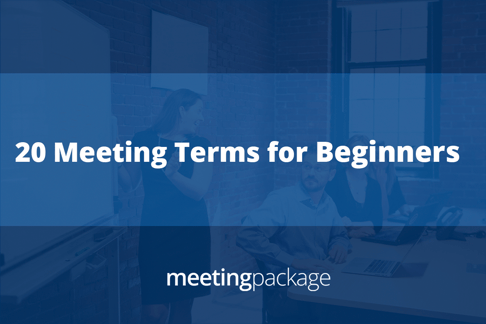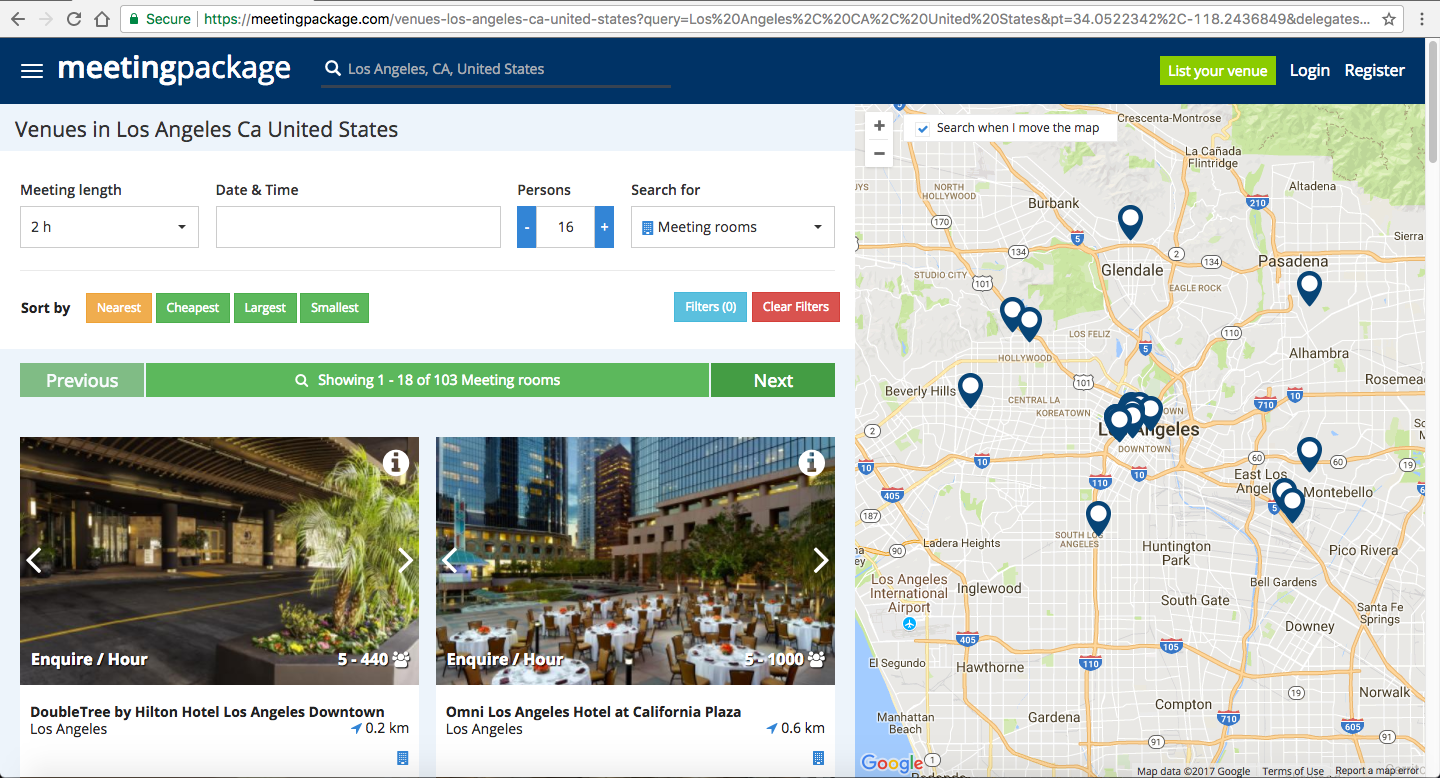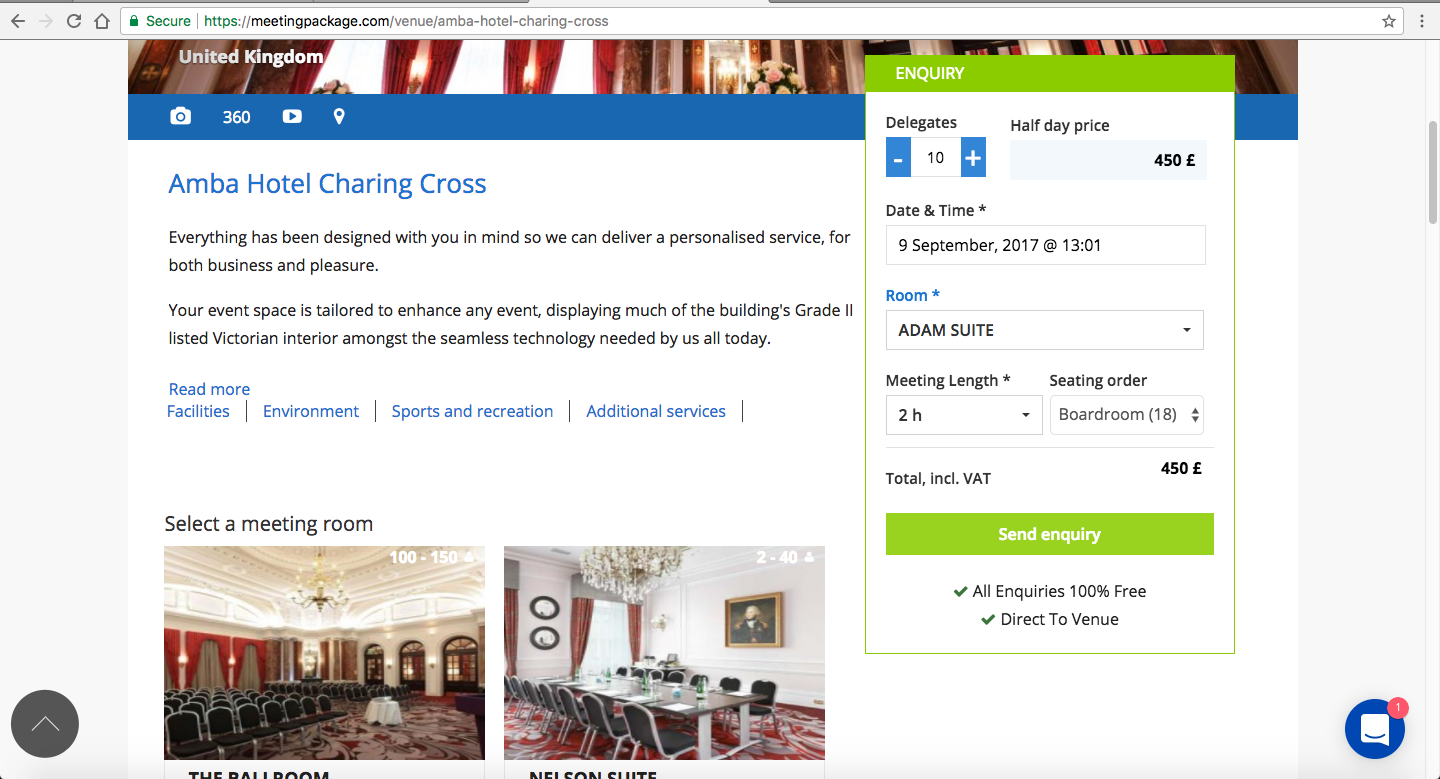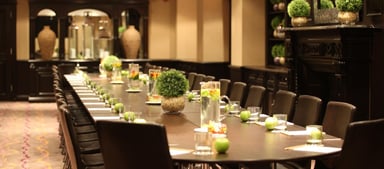
Thang Tran
There are a lot of terminologies in the MICE world.
First of all, congratulations and welcome to the MICE world! You are now one of over 100.000 registered meeting and event planners around the world, who are together making a billions-dollar-fast growing industry, organising over 1.3 million business events and hosting over 85 millions people in the United Kingdom in 2016. (source: EvenbriteUK)
For a newcomer, it is sometimes overwhelming to think about all of the terminologies and acronyms that the industry throws at you. But fear no more, because today we will help you to have a better understanding about some of the most encountered meeting terms.
1. Certified Meeting Professional (CMP)
The Certified Meeting Professional is one of the most well-recognised certification for meetings, conventions, and incentive professionals. The program is designed to educate meeting professionals, increase meeting professionalism, and promote industry standards, practices and ethics. To be a Certified Meeting Professionals, you have to apply for the program and take a rigorous exam afterwards. There are more than 11.000 meeting professionals in 55 countries around the globe who are currently holding the CMP certifications (source: Event Industry Council).
2. Offsite meeting
An offsite meeting, as its name expresses, takes place in a venue outside of the familiar working space. The objective of organising an offsite meeting may vary, depending on the size of the business. Start-up and small-sized companies often use off-site meetings as opportunities to promote brainstorming sessions or to make strategic decisions. Meanwhile, larger corporate take off-site meetings as a chance to organise training and other career-enhancing activities. In addition, holding an offsite-meeting in a hotel also brings other perks for the employee's health and well-being.
3. Request for Proposal (RFP)
A Request For Proposal (or RFP) is a solicitation in which a meeting planner ask for capacity and bidding information of the potential venues in preparation for their meeting & event needs.
An RFP works as the first communication channel and helps to keep everyone on the same page. Things can be tricky when you send an RFP for a hotel venue because whether it is an individual hotel or a hotel part of a global chain, the practice of processing an RFP will vary from hotels to hotels.
4. Site visit
A site visit may be the most important practice for meeting planners before choosing a new venue. It is the first opportunity for a planner to get a feel of the space and meeting the property staff face-to-face. On a site visit, a planner often takes into account three elements:
1. The aesthetic aspect. Does the place match the vision for the event?
2. The logistic. Can every piece of equipment and inventory fit through the loading dock?
3. Trust. This one is the most crucial aspect of negotiating with a venue. The photos and layout are often highly edited for visual satisfaction. But when planners feel duped after the site visit, it falls heavily on the communication between the venue and meeting planners.
5. On-site Registration
Attendees register themselves upon arrival at the events.
6. Online Marketplace
An online marketplace is a website or app which is presenting different properties from various sources and facilitating a transaction. In the MICE world, an online marketplace acts as a third party between bookers and the venues, showcases the properties' information and allows bookers to send booking requests for meeting rooms and services.
MeetingPackage.com meeting venues search results
7. Online Registration
The online registration is a process in which you enter the information of attendees, select the meeting rooms and meeting rooms layout, request additional equipment and services, and send an e-RFP to the venue.
You can fill in the information of your meeting in the Venue Page
8. Meeting Packages
A meeting package (or daily delegate rate) is a combination of meeting space with food, beverage and accommodations. The practice of including Food and Beverage alongside with meeting room hires is common for venues, especially for hotels, to increase sales. The extra services listed in a package may vary and contain coffee breaks, and breakfast, and so on.
The best way to distinguish meeting packages is based on lengths. We break down 4 type of meeting packages as seen below:
- Half-Day Package: From 2 to 5-hour meeting with one break
- Full Day Package: From 6 to 10-hour meeting with several breaks and the possibility of lunch offer.
- Overnight Package: From 6 to 10-hour meeting with several breaks, including lunch, dinner & breakfast, and accommodations
- Two-day Package: From 6 to 10-hour meeting with several breaks, including lunch and dinner, accommodation offered, and meeting room on the following day.
An example of a Full Day Meeting Package
9. Meeting Room Fixed Fees
If there is no package available, meeting rooms will accommodate with the so-called "flat rates", or room rental fees. Such fees typically include meeting room rental, guest rooms, transportation and parking, AV equipment, Internet access, package handling, drop fees for amenities, labour and service fees, and taxes. The meeting room's fees can vary by the location, by season and by business demand. You should be mindful of discounts or promotions offered at certain times of the year, and be flexible when it comes to time and dates. Also keep in mind that preliminary rates may not include all applicable service fees and taxes, so you should be clear while communicating with your hotel contacts.
10. Request a Quote
The most common practice for a customer while browsing websites will be sending requests for quotation to 3-4 venues. An RFP is when the venues do not provide the prices publicly.
11. Booking Request
Once you have decided on the suitable venues for your meetings or events, you will send booking requests to reserve the chosen meeting room. The payment is made only when the venue confirms the booking with the dates and amount of delegates as agreed. Generally, the booking is confirmed or cancelled within 24 hours.
In the traditional booking process, before getting to the contract stage, you'll likely run into the stage which I'd like to call "pending". The basis of booking meeting rooms is "first come, first serve" - the first booker will have the first right to either accept or refuse the contract. After a certain time or once the first booker chooses to decline the offer, it is the next person in line to have the right. This queuing process would take up a lot of waiting time until a booker can choose a suitable venue. That's where online availability and instant booking option comes in play.
12. Instant Booking
When a venue gives the prices publicly and the availability calendar available for booking, then the customer can instantly make a reservation for the meeting room for the available date. The instant booking confirms the booking immediately without delay, which saves you the trouble of the venue checking the availability. Instant booking depends a lot on online availability, which brings us to the next point.
13. Online Availability
The online availability feature ensures that a booker can see your accurate availability at any given moment, and at the same time, you and your colleagues also see what is happening at any given moment with your business. The online availability feature often comes with an online calendar.
An online availability calendar is a tool that is implemented to display the availability of meeting rooms on certain dates or times so that customers can check it instantly. In this day and age, the online calendar is a critical tool to have. The online availability will likely get rid of the hassle of "space holding" in traditional bookings.
Real time booking is another functionality of online availability, which allows customers to make instant reservations with the venues. The process goes like this: the customer sees the meeting room available through the online availability, and once he books the room, the entire system is automatically updated and blocks the meeting room for the reserved hours.
14. Cancellation Policy
Venues and hotels always impose a list of complicit terms and conditions for cancellation of the booking. And to avoid paying a hefty fine for cancelling a meeting, take your time to review the cancellation policy to spare the burdens for both parties. Some venues or hotels might have long timelines and tremendous penalties for cancelling even six months before your meeting and event. If you hold a big meeting for a large group of people, be mindful that the cancellation clause is going to be more aggressive since you are taking up a large majority of the hotel room allocation.
When negotiating the contract, make sure that there is a force majeure condition, in which clear your responsibility to pay the penalty when the meeting is cancelled in the event of certain occurrences outside of your control, such as acts of war, terrorism, bad weather, labour strikes, and so on.
15. Room block reduction (Attrition Clause)
Room block Reduction (or Attrition Clause for meeting planners across the pond) is a clause made to protect the venue from the lost revenue of renting the meeting space for a meeting or event. Since it is impossible to predict the number of attendees turning up at the meetings or events, the venue and the planner will agree on a percentage of the total block of reserved space. The common percentage falls between 80 to 95% of the total reserved space. The planner will have to pay for the differences if there is any number of blocks less than the guaranteed percentage.
Normally, planners will do everything in their hands to take the attrition clause out of the contract. But there are some cases it would be riskier for planners without the attrition clause in the contract. Some hotels or venues will take the situation that the complete absence of attrition clause in the contract means that the group holds 100 percent responsibilities for the rooms and services. In other words, in case of cancellation of the meeting, your group has to be responsible for 100 percent of the meeting rooms instead of 80 percent for the room block under the attrition clause.
16. Force Majeure
Circumstances beyond control that prevent the fulfilment of the terms of the contract. This typically includes natural disasters, war, and outbreaks of disease.
17. Syndicate Room (Break out room)
Smaller rooms at the venue made available for breakout sessions.
18. Room Layouts
Room Layouts are different set up of tables and chairs in a meeting space to maximize the space used for the specific amount of attendees. Most common room layouts are:
- Theatre style layout: chairs are lined up in rows and facing the speakers along with aisles for easy access. Ideal for presentations, seminars, and big conferences.
- Boardroom layout: chairs are set up on all four sides of a long, big table for an intimate face-to-face discussion. It is perfect for board meetings, team briefings, and group interviews.
- U-shape layout: rectangular tables are set up into the shape of the letter U with chairs positioned on the outside facing up the inside space.
- Classroom layout: this layout is quite similar to the theatre layout, except for including tables for extensive note-taking. The purpose of a classroom set up is best used for team training or lectures.
- Banquet layout: round tables are set up in the middle of the meeting space with chairs facing inwards. A banquet layout is great for formal events such as ceremonies or corporate holiday parties where attendees are mainly seated for dining purposes.
19. Off-season & High Season
High Season is the period of the year when travel is most frequent, and venues are usually fully booked. Subsequently, rates for meeting rooms and services are at the highest in this period. In the meeting industry, peak seasons are from September to December, and February to May.
Conversely, the off-season is when demand for meeting places decreases and venues struggle to sell out their facilities. Rates in off-season period are lower than in peak seasons, and venues will give out discount promotions. Being mindful of the high-season and off-season helps meeting planners actively seek for the best deal with venues and take advantage of fruitful promotions.
20. On-site catering
On-site catering is a service offered by the venue, which chefs and his staff preparing fresh ingredients and make the food specifically for the event. The food is hot and fresh, goes from the stovetop, or grill right to the plate - and rarely spends time in warming trays. In some cases, the venue allows you to bring over your selected chefs and staff to make the food on the premises. The presence of on-site catering service must be stated on the contract.
In Conclusion
Of course there are just some of most used meeting terms in the vast world of MICE, but understanding them provides the stepping stones for you to communicate with other professionals and savy partners. If you are looking for a tool to help you save time finding meeting venues while in the mean time save time and effort in communicating with the venue partners, MeetingPackage.com is what you need. Head over to MeetingPackage.com and start exploring the over 250 000 meeting rooms available worldwide!









